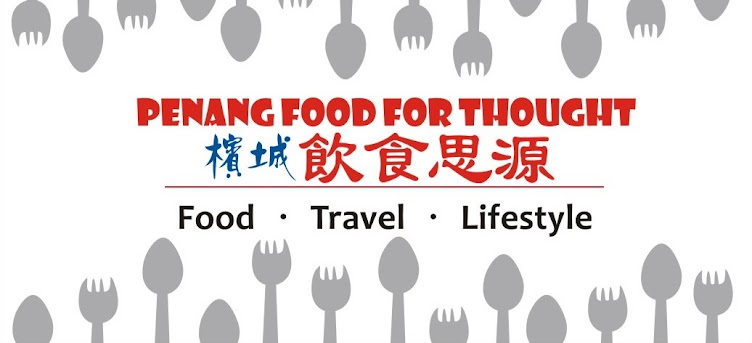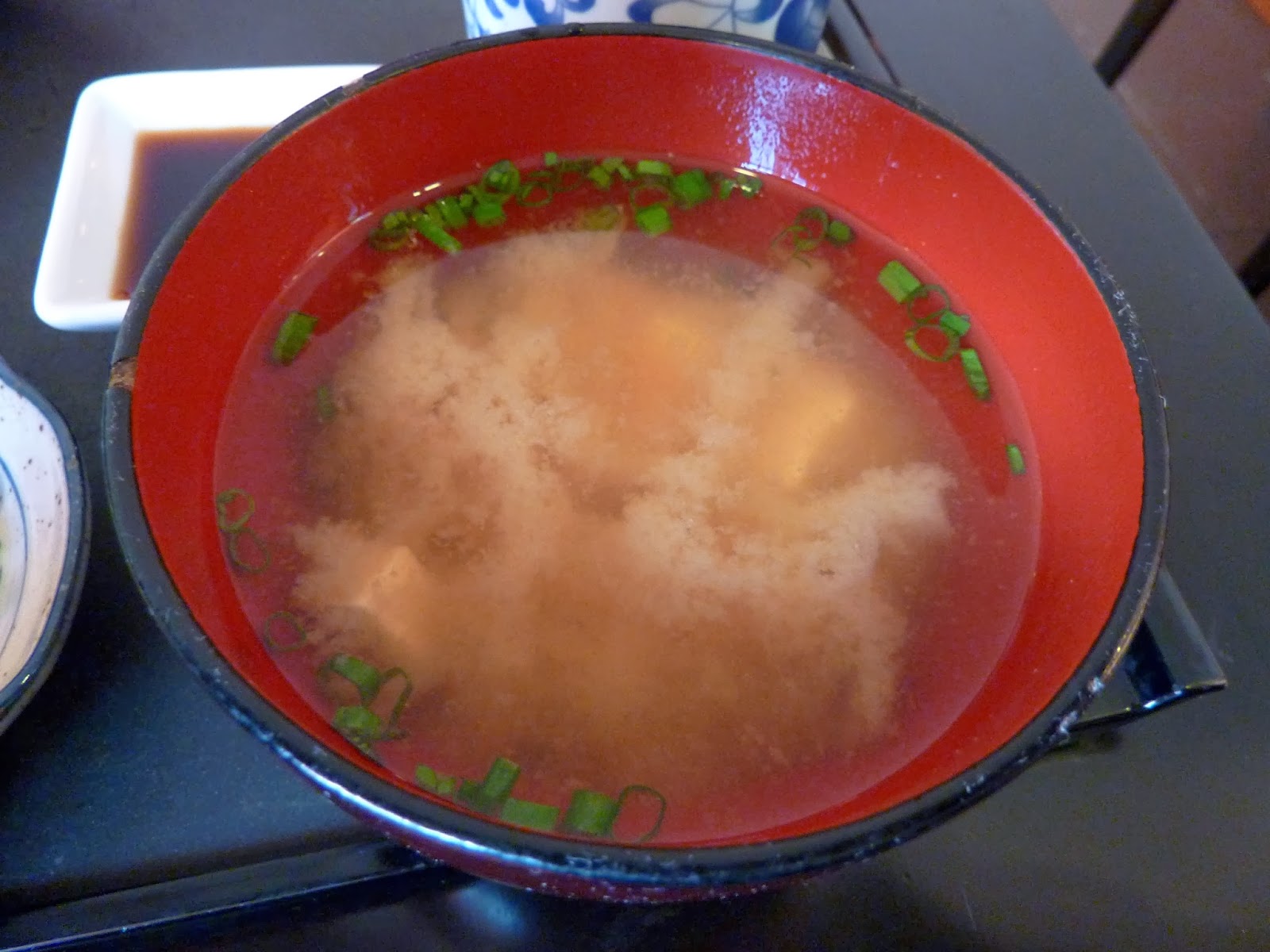Kissa Koyotei is located on Hutton Lane directly behind New World Park, where it occupies the ground floor of a two-storey building. The restaurant is rather obvious to spot due to its orange facade. Parking is available at the side of the restaurant and is free for customers, but parking spots are quite limited during peak hours.
The interior decor of the restaurant is elegant and finely crafted. Light Japanese pop music contributes to the cozy ambiance in the dining chamber. Setting aside the obvious visual appeal of waitresses, the atmosphere of Kissa Koyotei is quite comfortable indeed. A small bar to the left is stocked with various brands of Japanese wine (酒) and beer (ビール).
While we are scanning through the extensive food menu, we are served with some complimentary Appetizer. It is a cold dish made with fried eggs, onions, scallion and carrots. It serves to open our appetite, but I think the portion is too small to be useful.
Our first set meal is the Unagi Don & Salmon Set (RM36.00). As the name implies, this set includes a bowl of Unagi Don (鰻丼) and a serving of Salmon Sashimi (鮭刺身). Also included are a cup of Chawanmushi (茶碗蒸し), a bowl of Miso Soup (味噌汁), several slices of Takuan (沢庵), Shoyu (醤油) or soy sauce, and a couple of Orange Slices.
The Unagi Don is a bowl of white rice served with several slices of unagi (鰻) or freshwater eel, fried egg, and slices of seaweed (海苔). The unagi is very satisfying and palatable, while the fried egg makes the plain rice more savory.
Equally impressive is the Salmon Sashimi. Three thick, succulent cuts of raw salmon are presented before our very eyes. With a little magic with wasabi (山葵), the fatty salmon slices effortlessly vanish into our watering mouths.
The Chawanmushi is served in a tea-size bowl. The egg custard is soft and delightful especially when still steaming hot. Unlike other cheaper Japanese restaurants, Kissa Koyotei's Chawanmushi is loaded with many ingredients, including ginkgo seeds, shiitake mushrooms (椎茸), shrimps, kamaboko (蒲鉾) or fish cake, and scallion.
Made from fermented soybeans, the Miso Soup is served hot and contains bean curd and scallion. However, the flavor from the miso paste is not as strong as we desired.
An often-overlooked delicacy in Japanese cuisine is Takuan, or pickled daikon. The Takuan gives a slight tangy and sweet flavor, which is useful when switching between different dishes.
A couple of Orange Slices serves to wash down our throats after a heavy meal.
The other set meal is the Sushi & Soba Set (RM41.00). As though the previous set meal is not gratifying enough, the second one even larger. It comprises of a platter of Sashimi (刺身), assortment of Tempura (天ぷら), Kake Soba (掛け蕎麦), Chawanmushi, Miso Soup, slices of Takuan, Grated Daikon, Grated Garlic, Shoyu, and several Orange Slices.
Kissa Koyotei's Sashimi platter is very appealing indeed. There are five different types of nigirizushi (握り寿司) and several pieces of makizushi (巻き寿司). Nigirizushi dishes are made with rice pressed by hand into rectangular blocks, then topped with ingredients, usually raw seafood. As for makizushi dishes, rice and ingredients are enveloped in nori (海苔) or seaweed with the help of a bamboo mat called makisu (巻き簾).
In this serving, the nigirizushi dishes are Maguro Nigiri (鮪握り) or raw tuna, Ebi Nigiri (海老握り) or cooked shrimps, Hokkigai Nigiri (北寄貝握り) or Atlantic surf clams, Ika Nigiri (烏賊握り) or squid, and Sake Nigiri (鮭握り) or raw salmon. The makizushi is called Kappamaki (河童巻き), which contains cucumbers and is named after a mythological creature fond of this fruit.
The taste of Tempura is also very gratifying. The assortment consists of shrimps, sweet potatoes, eggplant (brinjals), and okra (lady's fingers) coated with batter then deep-fried. Although some diners like to dip Tempura into light soy sauce, I prefer to enjoy as it is, because I like the crispy sensation of the batter.
The Kake Soba (掛け蕎麦) is a hot noodle dish served with several ingredients such as kamaboko (蒲鉾) or fish cakes, seaweed (ワカメ), mitsuba (三つ葉) or Japanese wild parsley, and scallions. Soba refers to both the thin noodles and the buckwheat (蕎麦) which it is made of. The dish is reasonably nice, but would be better should it have more flavor.
This set also includes Grated Daikon (大根) or white radishes, and Grated Garlic. Although daikon is nearly flavorless, it is moist and therefore refreshing.
The other dishes in this set meal: Chawanmushi, Takuan, Shoyu and Orange Slices are the same as the previous.
For drinks, we just had glasses of Pepsi Revive (RM2.80). In retrospect, I am not sure why we did not order something more "Japanese", such as green tea or sake.
Overall, the food at Kissa Koyotei is very satisfying and we enjoyed nearly every bit. The food is fresh and made of ingredients of high quality. The waiting service is quick and attentive, and distracting in a good way. However, the bill is quite hefty and burns a large hole in our wallets.
























No comments:
Post a Comment